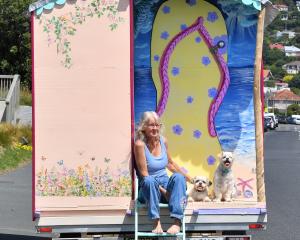
"With pipes being replaced, I expect that this question [of where the lead came from] will never be answered," Massey University senior lecturer in environmental health Nick Kim said.
Speaking to media after attending the Waikouaiti-Coast community board meeting on Wednesday night, Southern District Health Board medical officer of health Dr Susan Jack said some blood test results of residents, including children, of Waikouaiti, Karitane and Hawksbury had shown elevated lead levels.
Dr Kim said the rush to undertake blood lead testing was always going to mean some samples would come back with positive results, and a handful would be above a health guideline value.
Without careful control sampling, there would be no way to say if the lead levels were anything out of the ordinary.
"Lead occurs naturally, and there’s always a baseline intake from food, so we all have a natural intake of daily lead.
"Whether that is at levels that are detectable in blood will vary both with the type of foods a child eats and the sensitivity of the analytical technique.
"After that, we have range of potential sources where the two most prominent are dust contamination from [usually old] lead paint, and the legacy of leaded petrol in urban garden soils.
"Lead paint is associated with many older weatherboard houses, both on the boards and in the soil. As an example, children using a playground near an old school building or early childhood centre could experience higher exposures.
"Drinking water can, of course, sometimes be a source. Most often, this is linked with the individual plumbing to that particular house."
Children could also be exposed from chewing or sucking on some types of toys, paints, and other sources, such as a parent melting old lead-acid battery plates down to make fishing sinkers, which had happened, Dr Kim said.
Dr Jack yesterday reassured the affected communities, saying a small number of elevated lead level results from blood tests was not unexpected.
Most people had detectable but very low levels of lead, as would be expected in any community, she said.
She urged people not to jump to conclusions.
“The results require careful interpretation, taking into consideration individual exposures and available literature.
"We are working with the Ministry of Health and expert ESR scientists to build an accurate picture."
At Wednesday’s meeting, Dunedin city councillor Jim O’Malley referred to the possibility water test results that showed a spike in lead levels could have been false-positive results.
After the meeting the Otago Daily Times was told some original water samples could not be tested again, as they no longer existed.
Cr O’Malley said he was not saying there was a failure from the testing company, but in all testing there was a possibility of getting an incorrect reading.
It was two high lead level results in December — at the Waikouaiti Golf Course and in Karitane — that led him to consider whether the tests could have been false-positives.
"We can’t really explain how you would find enormous numbers in two parts of the system, and then no other parts of the system," Cr O’Malley said.
"It is getting really hard to explain this now and that is why ... you have to start saying, maybe those weren’t real numbers in the first place.
"That is why there was ‘no-drink notice’ put at that time ... there was still no real explanation."
He was not sure what protocols the laboratory — which he believed was in Wellington — had in regards to keeping samples to be retested, but did not believe it was common to keep enough material to do a second test.
However, Dunedin environment consultant Dr Selva Selvarajah said he believed it was unlikely a test would falsely detect lead.
While it would depend on which method the laboratory used, if the correct protocols were in place and followed, the tests were generally accurate, he said.
Given that lead was detected six times, in six different samples, it was not likely they were false-positives.
He believed usual practice would be for a laboratory to retain samples for a period in case re-testing was required.
A public meeting to update the community on the council's investigation into the possible lead contamination of the Waikouaiti water supply, and the results of blood testing, will be held at the East Otago Events Centre on March 5.
Comments
Several comments. I believe the surname of the lecturer is Kim, not Cain. Some (not all) sources of lead can be distinguished using isotopes - something done at the University of Otago. Cr O’Malley demonstrates his lack of understanding of what is involved in water sampling and chemical analysis when he uses the phrase "false positive". Dr Selvarajah statements in this regard are accurate. Lead was in the samples when they were chemically analyzed. What is needed now is to determine (as best as possible) where that lead came from (acknowledging the possibility of sample contamination) and how it got there.
Eds: The error in Dr Kim's name has been corrected
You didn't need to get a scientists to tell you testing wouldn't help track the source.
Maybe there is a lead mine in the vicinity as yet undiscovered. Could be worth exploiting given the price of lead!












